By Lisa Clark
Before we differentiate a spectrum analyzer and a network analyzer, it is important to understand what these two instruments are, and what function they perform. Thus, we give a basic overview of the two devices and their basic mechanism:
Spectrum Analyzer
The spectrum analyzer is an electronic device that is used for measuring the magnitude of the input signal against the frequency in an instrument. It does this in the entire range of the instrument’s frequency bandwidth. It is useful to measure the spectrum powers of both the known and unknown signals in an electrical instrument. Although the primary signal that is fed into the spectrum analyzer is electrical, it also analyzes the spectral compositions of acoustic waves and light waves through the use of a proper transducer. This analyzer is advantageous in understanding the parameters of electronic devices, especially wireless transmitters because the spectral workings of the instrument in terms of signals, distortions, frequency and power can be easily observed. These are otherwise hard to detect in time domain waveforms.

The spectrum analyzer has two axes – frequency and amplitude — and resembles an oscilloscope in its layout. Without the spectrum analyzer, it would not have been possible to break the elements of a signal or to credibly gauge a circuit’s performance. Because spectrum analyzers have the capacity to undertake a large variety of measurements, they have become essential instruments for RF design development and test.
What exactly is Spectrum Analysis?
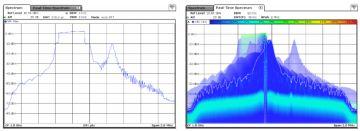
To put it simply; it is one of the easiest ways to look at waveforms in the time domain and to observe the varying signal in amplitude with the passing of time. By achieving this, spectrum analysis gives many advantages, especially in the case of RF applications. By observing the signal in the frequency domain, variables such as harmonics, the width of the signal applied, and spurious content of a signal can be known. This is important during RF development and particularly in cellular and WiFi applications because unwanted signals that cause interference to other radio spectrum users can be detected. The spectrum analyzer hence becomes an excellent tool to monitor this noise and to keep them held at acceptable levels.
Network Analyzer
Take note that these are not to be confused with network analyzers that are used in data network analysis. Network analyzers let users observe specifically, the network parameters in an electrical network. Although network analyzers measure y-parameters, Z-parameters, and h-parameters, S-parameters are the most commonly measured by these devices because their reflections and transmission are easier to measure even at high frequency.

Like spectrum analyzers, radio frequency network analyzers are also extensively used in RF design. Network analyzers are usually associated with measuring microwave-level frequencies, but they have the ability to decipher a much lower range of frequencies. They can be used, as described on the TRS Rentelco website, “for analyzing the different properties of electrical networks, related to the transmission and reflection of electrical signals”.
Why we need Network Analysis
A network analyzer characterizes and measures the response of a device or network. This way, the user can observe how the device or network works within a radio frequency circuit. These devices usually are employed for the measurement of a variety of parts such as filters, frequency sensitive networks, mixers, transistors and other RF-oriented devices.
By measuring the response of a device or network using an RF network analyzer, it is possible to characterize it and in this way understand how it works within the RF circuit for which it is intended. It is possible to use RF network analyzers for measuring a variety of components ranging from filters and frequency sensitive networks to devices such as transistors, mixers and any RF orientated devices.
Types of Network Analyzers
Scalar network analyzer (SNA): This variety only measures the amplitude characteristics of the radio frequency device.
Vector network analyzer (VNA): Besides measuring amplitude properties, it is able to measure other parameters such phase, etc.
Large signal network analyzer (LSNA): This is an exclusive network analyzer that can examine parameters of a device under large signal climates.
All these devices are available online.
Difference between RF network analyzers and spectrum analyzers
Similarities between the two analyzers include the use of tuned receivers that operate over similar frequency bands. The differences arise in the measurements made and how they are made. While a spectrum analyzer analyzes an applied signal, a network analyzer creates a signal and characterizes the devices that receive it. Further, the network analyzer is used to measure the reflection, insertion loss, S parameters, and transmission and return loss – which is to say that it deals in the measurement of device components. The spectrum analyzer, on the other hand, is used to measure carrier power level, noise harmonics, etc.
Network analyzers consist of multiple receivers plus a source-receiver that measures the broadband frequency by sweeping power and frequency. It seeks a known signal/frequency of a device output and, using vector-correction, gives a more precise measurement than the spectrum analyzer. On the opposite end, spectrum analyzers measure the parameters of a signal and not a device. They are commonly configured without a source. Spectrum Analyzers are also more flexible in terms of their IF bandwidths to allow a complete range of signal analysis.
Difference in Utility
One frequent application for spectrum analyzers is in the testing of electronic filter circuits. For this, they are usually equipped with a tracking generator that allows usage for scalar component testing without phase measurements. The trace, hence, is easier on display although interpreting the results can be harder than in the case of a network analyzer.
Network analyzers are predominantly used for tests in radio frequency design laboratories. They let designers understand many features of the component or network’s performance. These devices are usually not used in production because of their high price.
All in all, analyzers are critical for gauging the health of many electronic devices. They quantify various parameters of electronic devices and networks to show whether they are functioning without disturbance at an optimal level.
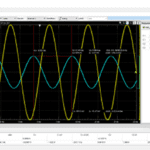
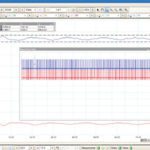
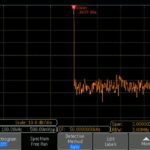

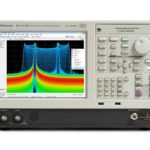

Thanks, you have cleared up several issues I have had regarding network analyzers. I have an HP 8566B which I use to verify the fitness of mechanical filters I service in my business, I defer the proper design to the OEM who did the initial R&D. Perhaps at some point a Network analyzer might be helpful if I decide to roll a product.
Best regards,
Glenn Scott WA4AOS
DSM Labs
Very useful article
Great Article. Thanks
Thank you for the article, I’m currently doing a research on oil spill detection using microwave energy. I was refereed to VNA to test water sample and crude oil sample to measure their reflective. can you add any comments on this regard. with many thanks in advance…
Thank you for the excellent presentation for clarity of the two.
Thank you, this article is exactly what I was looking for.